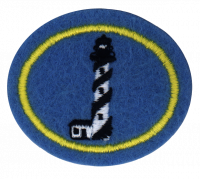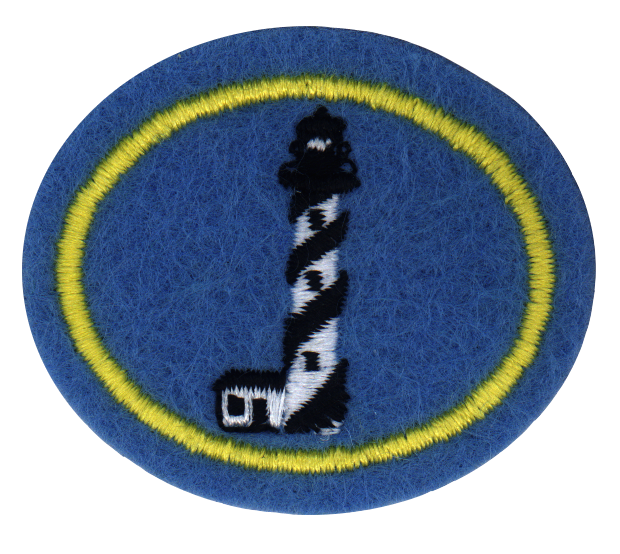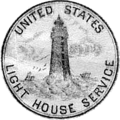Difference between revisions of "AY Honors/Lighthouses/Answer Key/es"
(Created page with "</noinclude> <!-- 3. A lo largo de la historia, ¿qué combustibles se utilizaban para las luces del faro? -->") |
(Created page with "<noinclude>") |
||
| Line 80: | Line 80: | ||
<!-- 6. Cuando un faro es visible desde el océano durante el día, se puede identificar por ciertas marcas. ¿Cómo se llaman estas marcas? --> | <!-- 6. Cuando un faro es visible desde el océano durante el día, se puede identificar por ciertas marcas. ¿Cómo se llaman estas marcas? --> | ||
| − | + | <noinclude></noinclude> | |
| − | <noinclude | ||
| − | |||
{{CloseReq}} <!-- 6 --> | {{CloseReq}} <!-- 6 --> | ||
{{ansreq|page={{#titleparts:{{PAGENAME}}|2|1}}|num=7}} | {{ansreq|page={{#titleparts:{{PAGENAME}}|2|1}}|num=7}} | ||
Revision as of 17:26, 29 April 2021
1
1a
1b
1c
1d
1e
2
3
4
Not all lighthouses are located along ocean shores. Many are also located along major rivers and lake shores including the Great Lakes between Canada and the USA. Michigan has more lighthouses than any other US state (114).
5
In the United States and in Canada, the Coast Guard is responsible for the lighthouse service. Other lighthouse services may be found by visiting The International Association of Marine Aids and Lighthouse Authorities.
- Historical Notes (United States):
- 1852 - the United States Lighthouse Board created as an agency of the US Federal Government to be responsible for the upkeep and maintenance of all lighthouses in the United States.
- 1886 to 1902 - the Statue of Liberty functioned as a lighthouse.
- 1910 - the United States Lighthouse Service (also known as the Bureau of Lighthouses) succeeded the Lighthouse Board.
- 1939 - the US Lighthouse Service merged with the United States Coast Guard, which now maintains and operates all US Lighthouses and Lightships.
6
7
Foghorns are a navigation aid for mariners. In foggy conditions, when visual navigation aids such as lighthouses are obscured by the weather, fog horns provide an audible warning of rocks, headlands, or other dangers to shipping.
Lighthouses are often built near shipping hazards such as rocks. It often becomes too foggy to see a lighthouse at a safe distance from these hazards, so an audible signal is needed instead.
The sound produced by a foghorn is a very deep pitch, due to the fact that deep sounds are audible to human ears at a greater distance than higher pitched ones. It is also very loud so ships a considerable distance away can heed its warning. Height above sea level is another factor that determines the distance at which a foghorn can be heard. Some foghorns can be heard up to six miles (9.6 km) away.
8
8a
- In Genesis 1:14-16, Psalm 136:7, and Ezekiel 32:8 refer to God making the lights in the sky
- Luke 8:16 and Luke 11:33 talk about putting a light under a basket verses on a lampstand where everyone can see it.
- In Acts 16:29 the jailer calls for lights to see if Paul and Silas had escaped from jail.
In all of these cases, the lights are there as an aid to seeing. Sometimes the light is so we can see physically, and sometimes so we can see spiritually.
The instances here are limited to the plural noun "lights" and do not include the singular form "light" or the use of light (or lights) as a verb. You may wish to expand the search to include those.
8b
Just as a lighthouse guides ships, God's word shows us the way to happiness and away from destruction.
8c
Then Jesus spoke to them again, saying, “I am the light of the world. He who follows Me shall not walk in darkness, but have the light of life.”
9
There are various forms of poetry, including traditional rhyming poems or non-rhyming ones. Haiku is a form of Japanese poetry containing three lines: the first line has five syllables, the second has seven, and the third has five. The Bible is full of poetry as well, though it is in a form unfamiliar to most English speakers. Biblical poetry repeats an idea using different words. Consider the full text of Psalm 136:7-9 (NKJV):
- To Him who made great lights,
- For His mercy endures forever—
- The sun to rule by day,
- For His mercy endures forever;
- The moon and stars to rule by night,
- For His mercy endures forever.
Notice how the first line speaks of the great lights, and is followed by a verse meaning the same thing, but with different detail. Also notice how "For His mercy endures forever" is repeated between each expression of the idea.
Consider this quote: “I can think of no other edifice constructed by man as altruistic as a lighthouse. They were built only to serve.” George Bernard Shaw.
You might look into the history of lighthouses. The Romans built many lighthouses. The lights were often extinguished for they might attract Vikings. Search for stories like this one http://www.economist.com/node/12792727 and then put your own version together. Have fun with this.
10
This is best done by visiting some lighthouses. Check out the Advanced Honor which requires collecting stamps at 10 lighthouses. You might as well make the first five count toward the ten while earning the basic Honor. Here we present examples of 6 styles.
| Octagonal | |
|---|---|
|
Description: As the name implies, and octagonal lighthouse has eight sides.
|
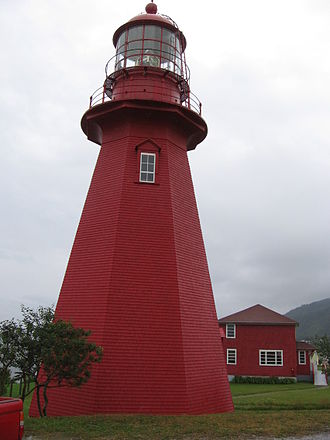 |
| Cylindrical | |
|---|---|
|
Description: A cylindrical lighthouse is round, having close to the same diameter at the top as at the bottom.
|
 |
| Skeletal | |
|---|---|
|
Description: A skeletal lighthouse has a base made of steel beams and posts rather than being composed of solid walls.
|
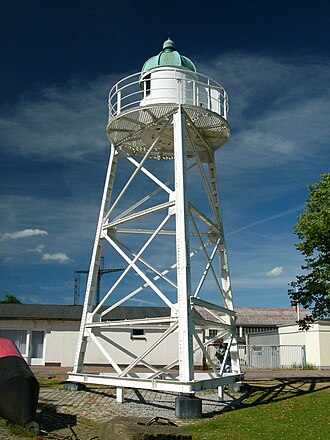 |
| Sparkplug | |
|---|---|
|
Description: A sparkplug lighthouse is short, squat, and round, like the sparkplug in an engine.
|
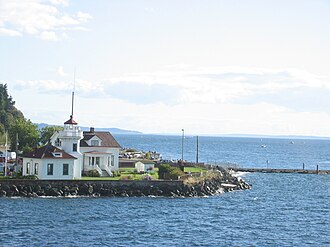 |
11
- a. Hacer una lista de los nombres y los lugares de cinco faros en su estado o provincia.
- b. Localizar en el mapa la ubicación de diez faros en su país/provincia.
The International Association of Marine Aids and Lighthouse Authorities is a good resource to check out for meeting this requirement.
The U.S. Park Service has an Inventory of Historic Light Stations which lists lighthouses from all over the United States, though this inventory is by no means exhaustive.
The Canadian Coast Guard has a List of Lights, Buoys and Fog Signals.
The US Lighthouse Historical Society has lots of info and runs the Lighthouse Passport Program required in the Advanced Honor.
Another way to find lighthouses is by using an Internet search engine using the terms "Lighthouse" and the name of your locality. If you cannot find five lighthouses in your state or province, you may have to expand the search and find ten lighthouses in your division instead.
12
We obviously don't know which references you will use, but here are the ones that were used to put these answers together:
- Overfalls Maritime Museum Foundation Overfalls Lightship online exhibit.
